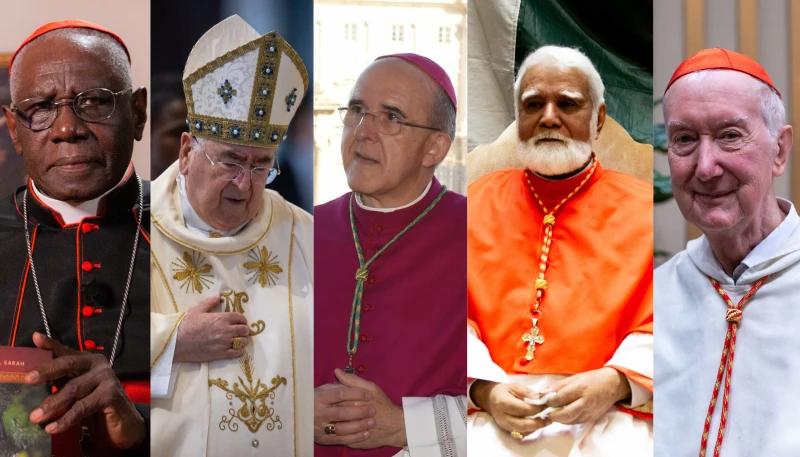By Okhueleigbe Osemhantie Amos
The Catholic Church stands at a decisive moment in its two-thousand-year history as it prepares for the 2025 Papal Conclave, scheduled to begin on *May 7, following the death of Pope Francis*. While every conclave is significant, this one is truly unprecedented in many respects. It is shaped by demographic shifts, doctrinal evolution, and a papal legacy that redefined the very image of the papacy. Here are the **sixteen most unique features** of this upcoming conclave.
*A Conclave Dominated by Pope Francis Appointees*
For the first time, more than 80% of the cardinal electors (108 out of 135) were appointed by one Pope, Pope Francis. Thus, reflecting his theological, pastoral, and global vision. These holy men have been chosen not only for their orthodoxy but for their emphasis on *synodality*, *social justice*, *peripheries*, and *dialogue with other cultures and faiths*. This tilt toward Francis’ worldview means continuity is more likely than rupture.
*Global Reach: 71 Nations Represented*
Never before has a conclave brought together cardinals from *71 different countries*—a record in the Church’s history. The electors now represent a radically globalized Church, with significant voting blocs from *Africa, Asia, and Latin America*. This shift may propel the election of a Pontiff from any part of the globe just as it was for the election of Pope John Paul II of Poland and Francis of Argentina.
*Increased Representation from Previously Unrepresented Nations*
Pope Francis’s appointments have led to the inclusion of cardinals from nations that have never before had representation in the College of Cardinals. This expansion includes countries like Mongolia, Brunei, and Rwanda, reflecting the Pope’s commitment to a truly global Church that acknowledges and incorporates diverse cultural and regional perspectives.
*A Historic Break with the 120-Cap Rule*
Traditionally, the number of cardinal electors was capped at *120*, as stipulated in Pope Paul VI’s *Romano Pontifici Eligendo* (1975). However, Pope Francis expanded the college, and this conclave will include *135 electors*, exceeding the canonical limit by 15. While juridically exceptional, this expansion signals a willingness to *broaden representation* and *redefine canonical norms* in favour of evangelization priorities.
*Logistical Challenges Due to Record Number of Electors*
With 135 cardinal electors participating, surpassing the traditional cap, the Vatican faces logistical challenges. The Domus Sanctae Marthae, traditionally housing the electors, contains only 129 rooms. Consequently, additional accommodations are being arranged in nearby facilities such as the Ethiopian College and Santa Marta Veccia. This unprecedented situation emphasizes the expansive and inclusive nature of the current College of Cardinals.
*Highest Number of First Timers*
Just as diverse as they are, and above the traditional numbers, 108 of the 135 cardinals are in for the first time to elect a Pontiff. This is uncommon, as the case has in previous years been a gross mixture of old timers and new comers. But this, the Church knows, is a blessing.
*A Generational Shift in Ecclesiastical Leadership*
The 2025 conclave marks a pivotal generational transition within the Church’s hierarchy. Notably, 14 cardinal electors will reach the age of 80 this year, rendering them ineligible for future conclaves. This turnover signifies a rejuvenation of the College of Cardinals, introducing younger perspectives into the decision-making process. The average age of the current electors has decreased, reflecting Pope Francis’s emphasis on infusing the Church’s leadership with renewed vigor and contemporary insights.
*Modern Conclave Setting: Domus Sanctae Marthae*
Unlike past conclaves when cardinals slept on makeshift cots near the Sistine Chapel, since 2005 they have stayed at the *Domus Sanctae Marthae*, a Vatican guesthouse equipped with private rooms and chapels. Yet, they are still under *strict isolation*, with all forms of communication—mobile devices, emails, even windows—completely sealed.
*Enhanced Cybersecurity Measures to Safeguard the Conclave*
In response to evolving technological threats, the Vatican has implemented unprecedented cybersecurity protocols for the 2025 conclave. The Sistine Chapel and Domus Sanctae Marthae are equipped with advanced signal jammers, RFID scanners, and other counter-surveillance technologies to prevent unauthorized communications and data breaches. These measures aim to preserve the sanctity and confidentiality of the papal election process in an era of pervasive digital intrusion.
*Maximum Security: Chapel Under Digital Lockdown*
This year’s Sistine Chapel has undergone advanced digital fortification. Vatican technicians have installed state-of-the-art jamming devices, signal blockers, and RFID scanners to prevent leaks, hacking, or unauthorized recordings. All external electronic transmissions will be scrambled. Vatican Gendarmerie and Swiss Guards have also enhanced physical security around the Conclave perimeter.
*Mandatory Secrecy Oath for All Personnel*
The 2025 Conclave enforces the *“Pontifical Secret”* not only on the cardinals but on *every staff involved*: cleaners, chefs, translators, elevator operators, doctors, and guards. They all swear oath under threat of automatic excommunication (*latae sententiae*). This stresses the Church’s insistence on total secrecy and solemnity in the election of the Supreme Pontiff.
*Emphasis on Pastoral Experience and Synodality*
The current conclave places a heightened emphasis on candidates with substantial pastoral experience and a demonstrated commitment to synodality—the collaborative and inclusive approach to Church governance championed by Pope Francis. This focus suggests a desire among the electors to continue the trajectory set by the late pontiff, fostering a Church that is more participatory and attuned to the needs of its diverse faithful.
*Media-Saturated Ritualism*
Despite the conclave’s cloistered nature, the external world will be more connected than ever. Millions will watch via livestreams for the symbolic *fumata bianca* (white smoke). Social media platforms are already flooded with speculation, and Vatican communication offices have set up real-time updates to maintain transparency without breaching secrecy.
*Election in the Shadow of Reform*
This conclave follows a pontificate that not only emphasized the poor, interreligious dialogue, and pastoral mercy, but also *reconfigured the Roman Curia* through *Praedicate Evangelium*. Francis’ 12-year reign is viewed by many as both *reformative* and *polarizing*. The cardinals must now decide: *consolidate his reforms*, *moderate them*, or *chart a new direction*.
*A Contingency for Medical Emergency Within the Conclave*
For the first time, a medical contingency protocol has been formally detailed and publicly acknowledged. Given the advanced age of several electors and the increased number of participants, the Vatican health services have installed a mobile clinic with emergency surgical capacity within Vatican City. This ensures that any health-related interruption can be swiftly managed without affecting the conclave’s integrity.
*In Summary*
The 2025 Conclave will be one of the most watched, most representative, and most strategically decisive gatherings of Church leadership in modern history. With more electors, more nations, more urgent issues, and deeper global scrutiny, the selection of the 267th pope will carry profound consequences not just for the Church’s 1.3 billion faithful—but for the entire world.
*Habemus Papam* may soon be heard, but the ripples of what happens inside the Sistine Chapel will be felt for decades to come.
Follow us on all social media platforms @dailyquery for news and analyses around the globe.



























